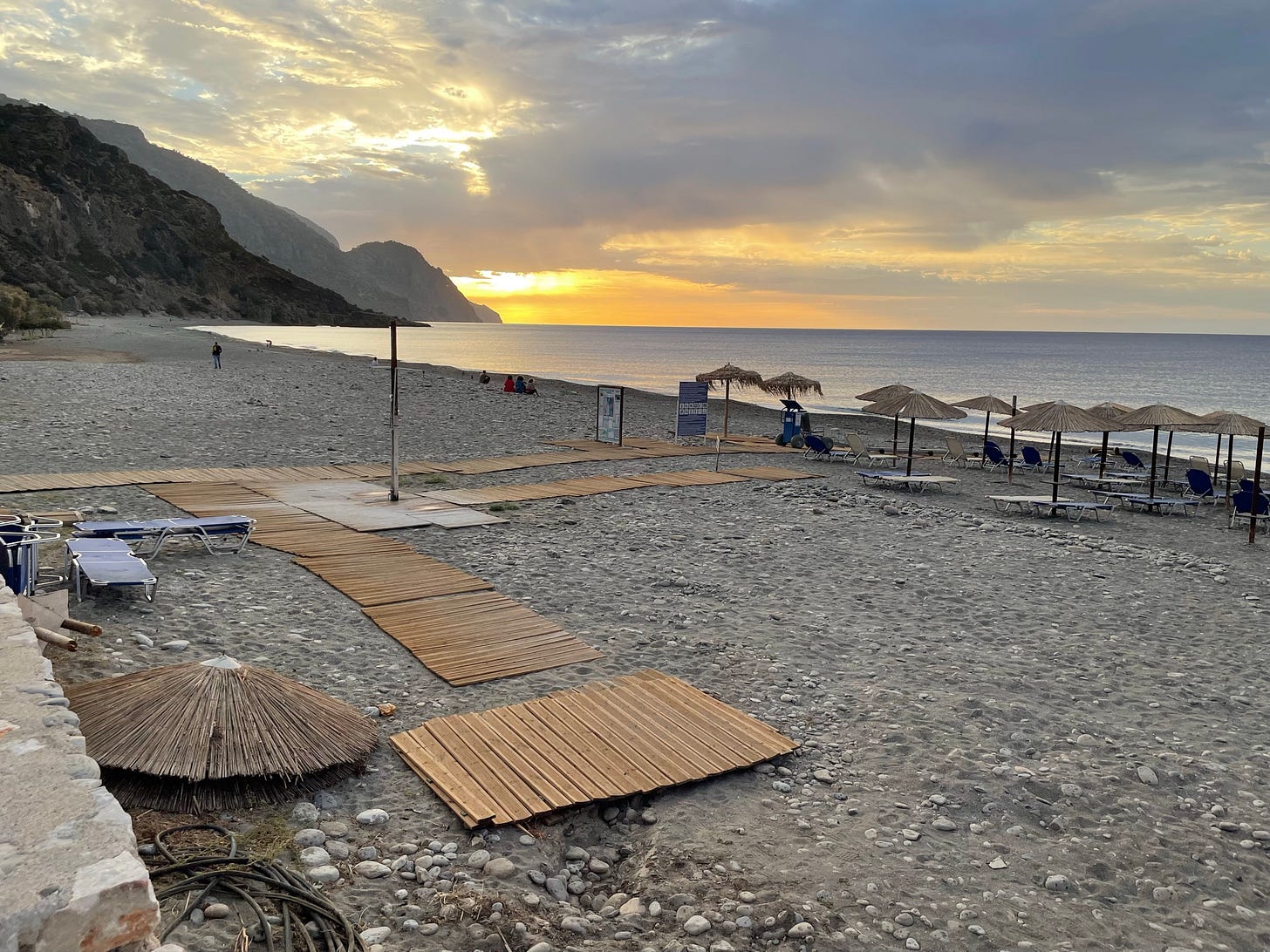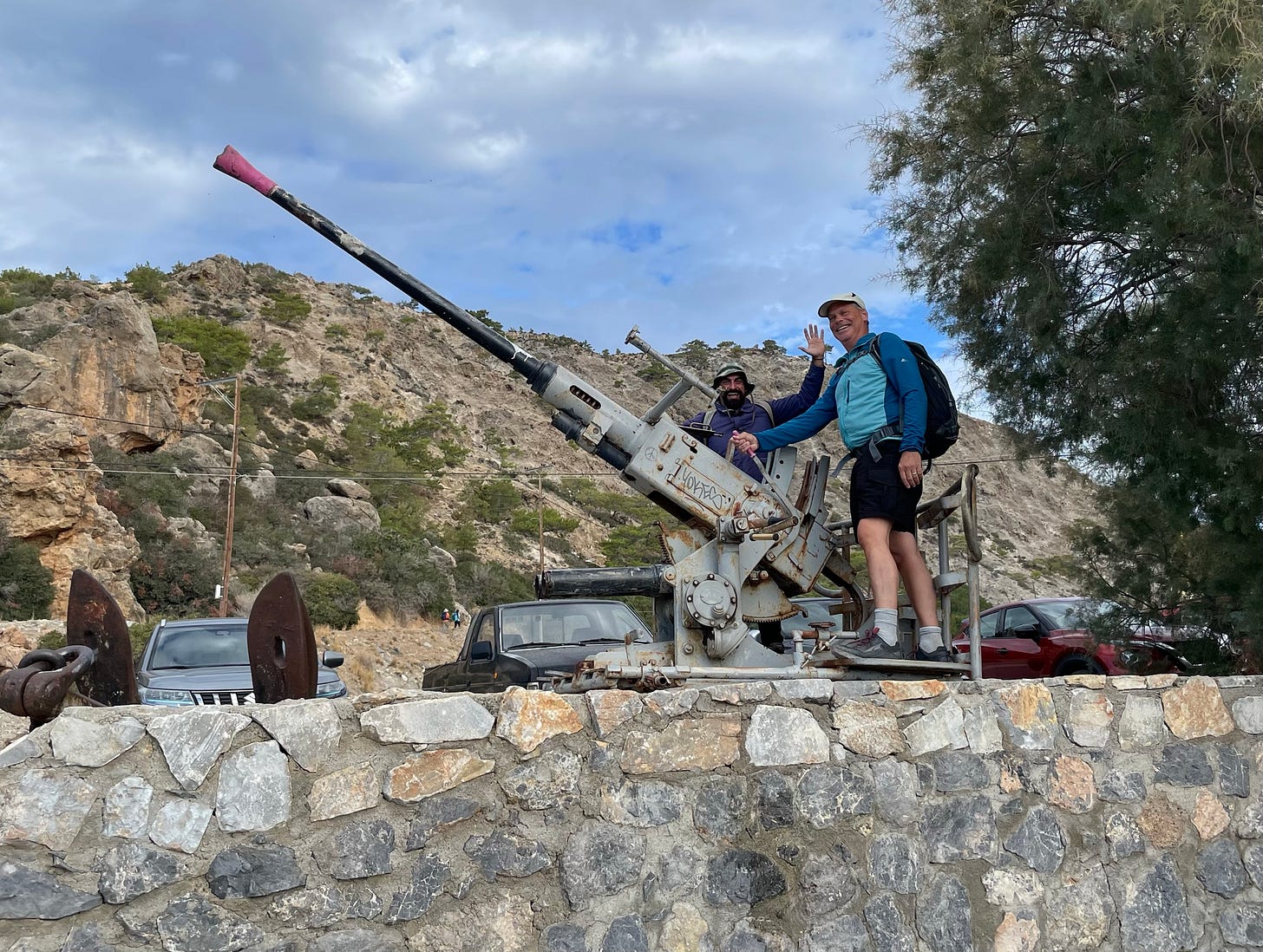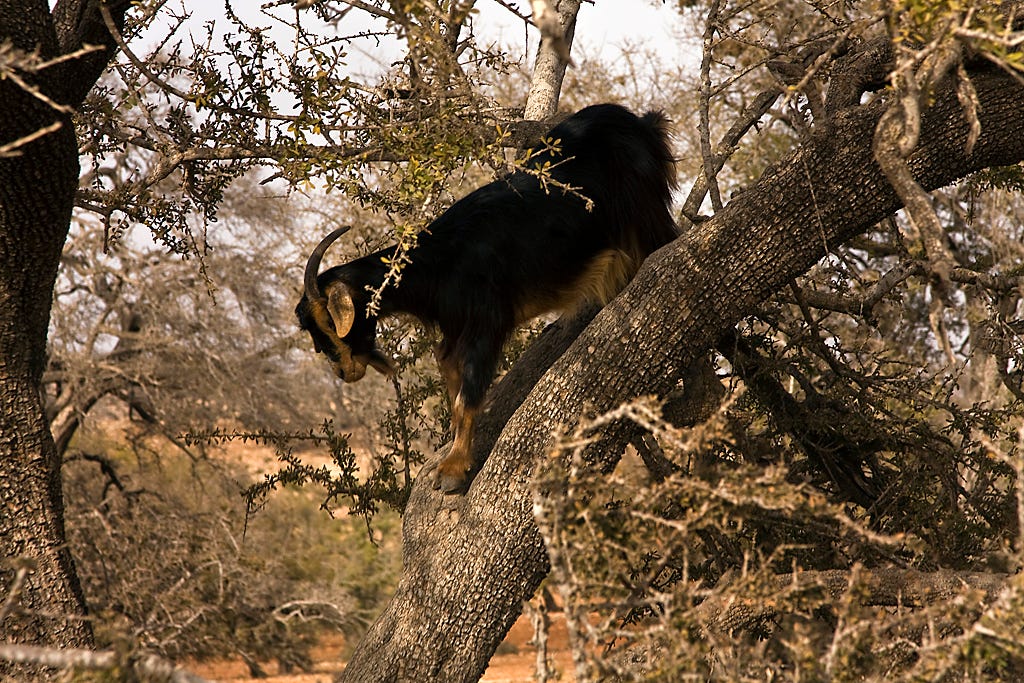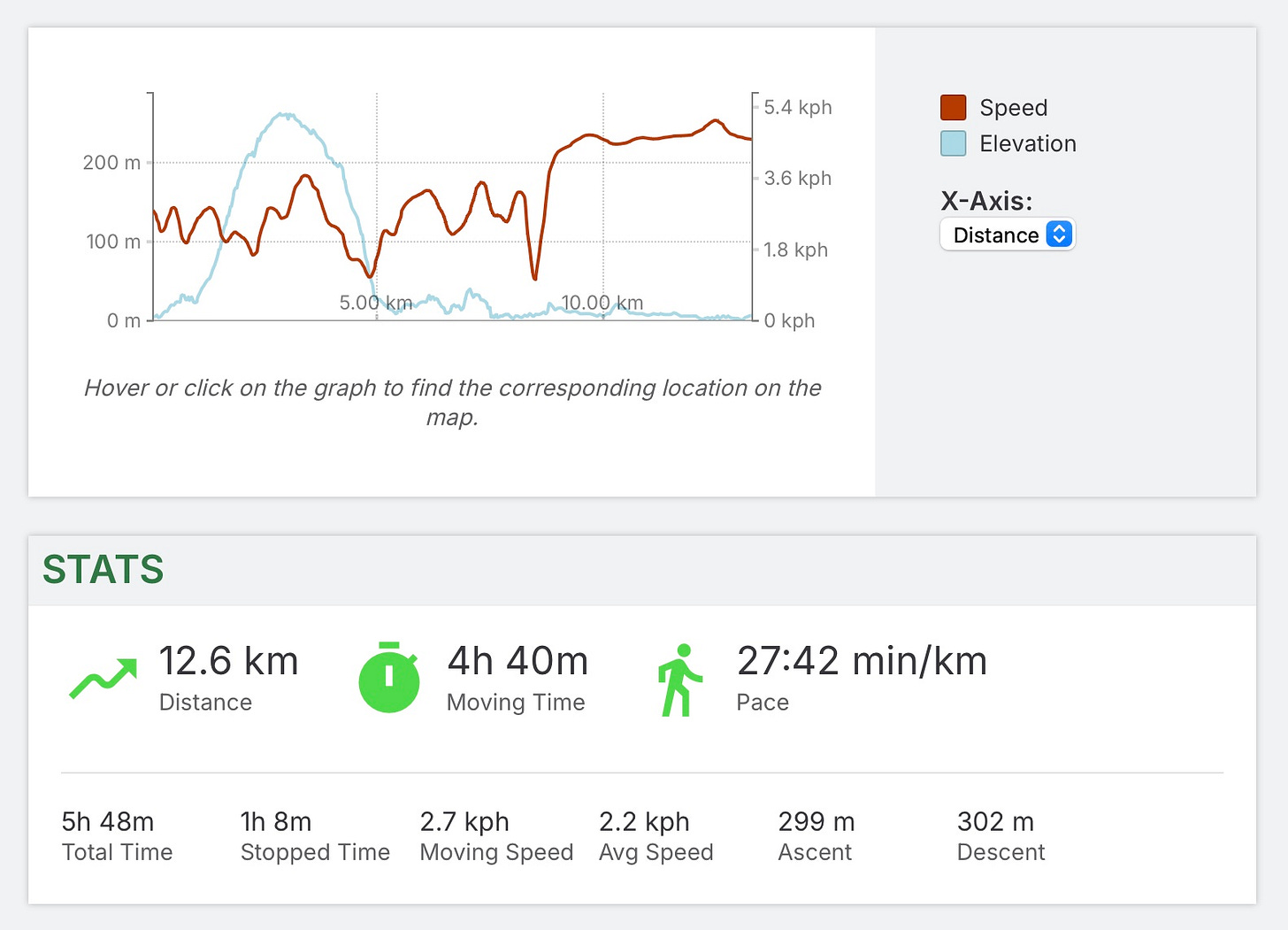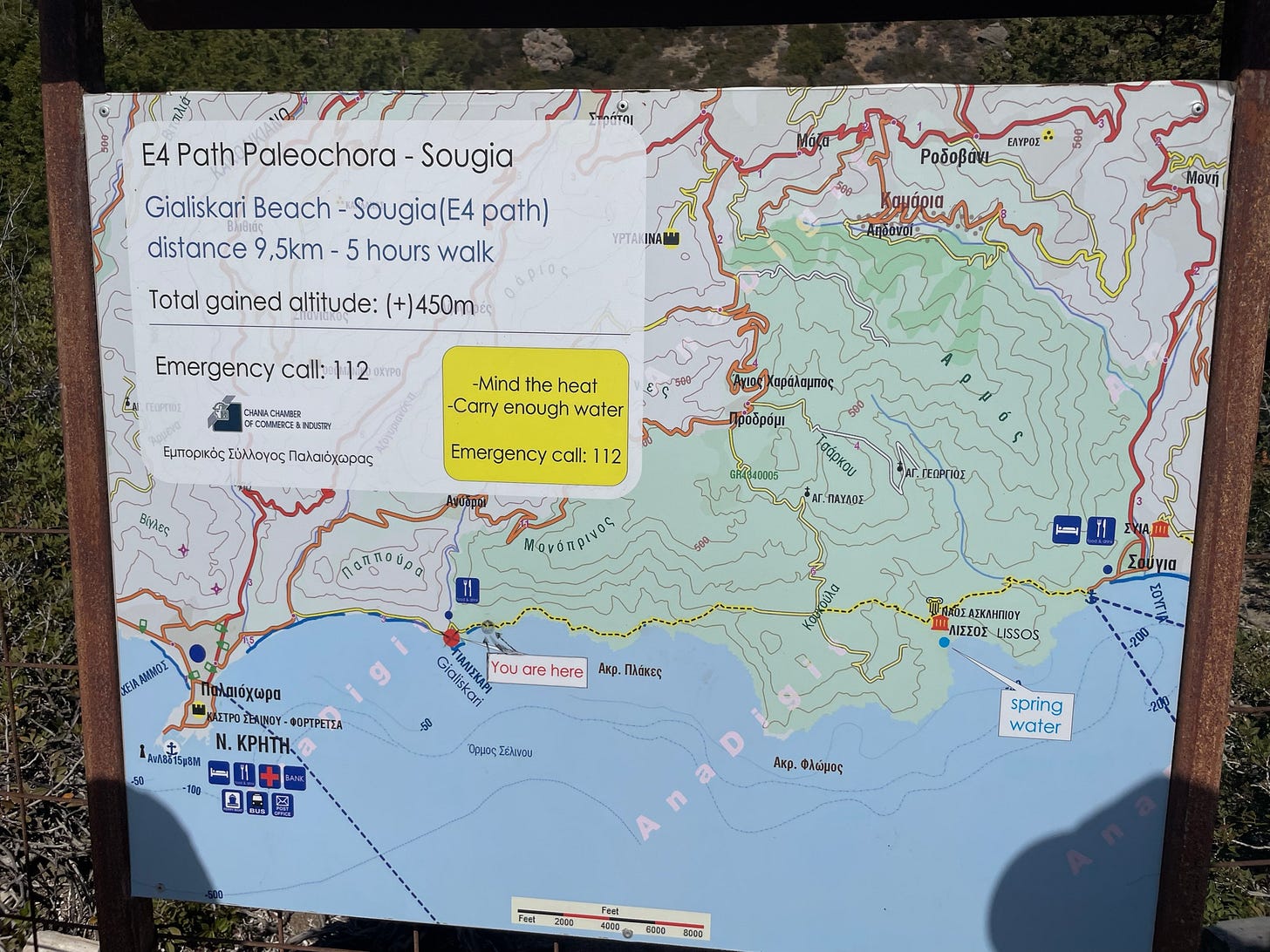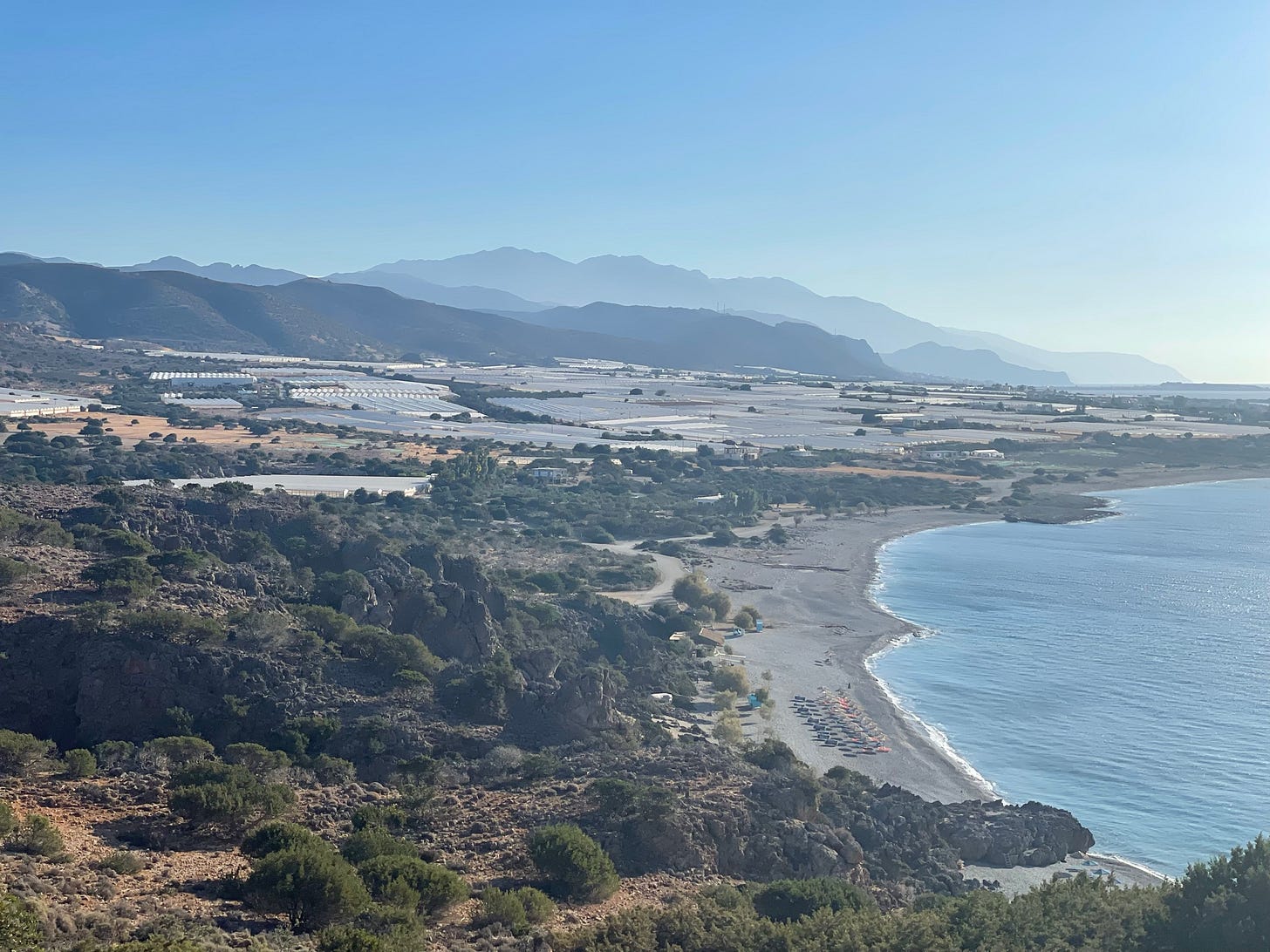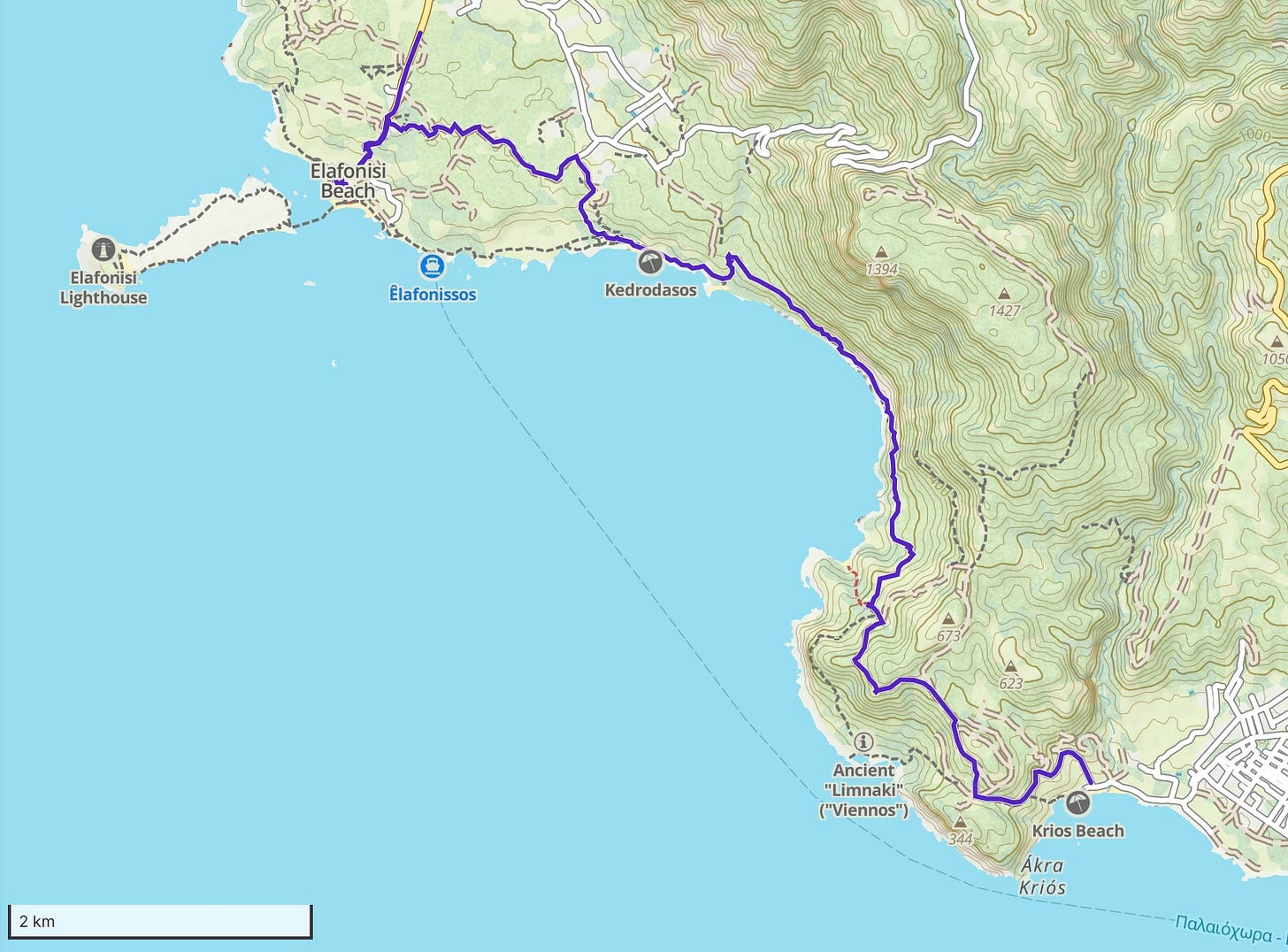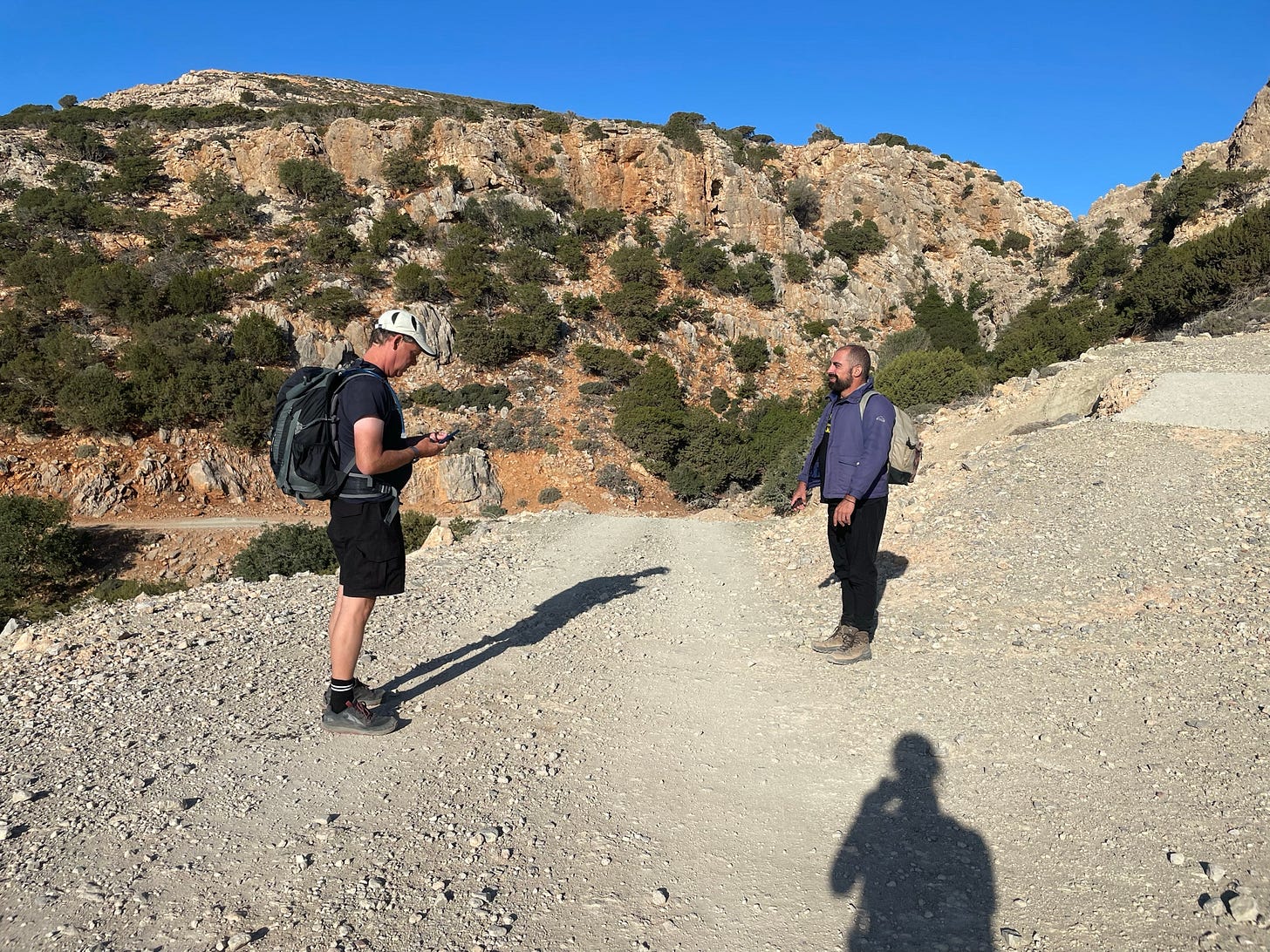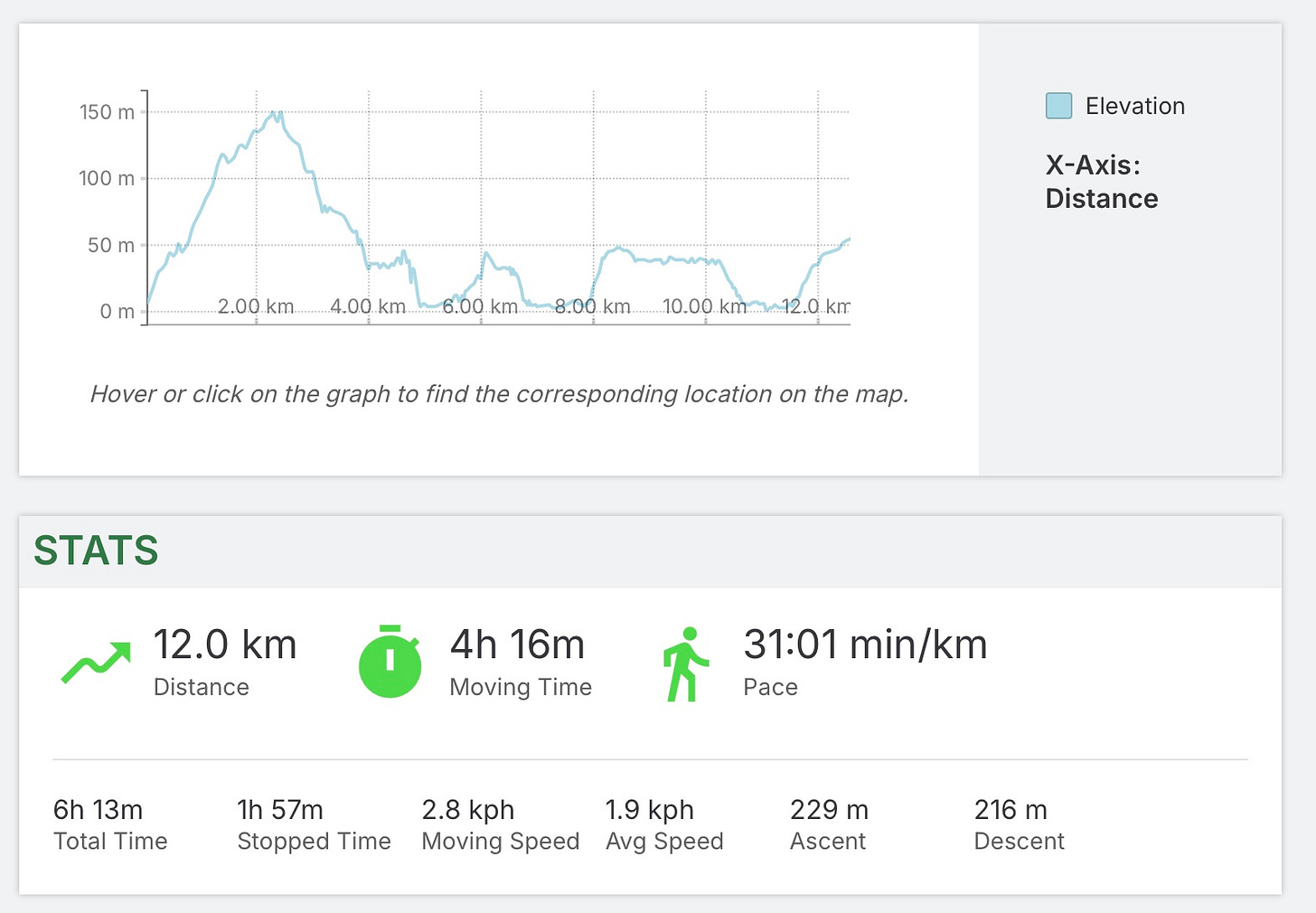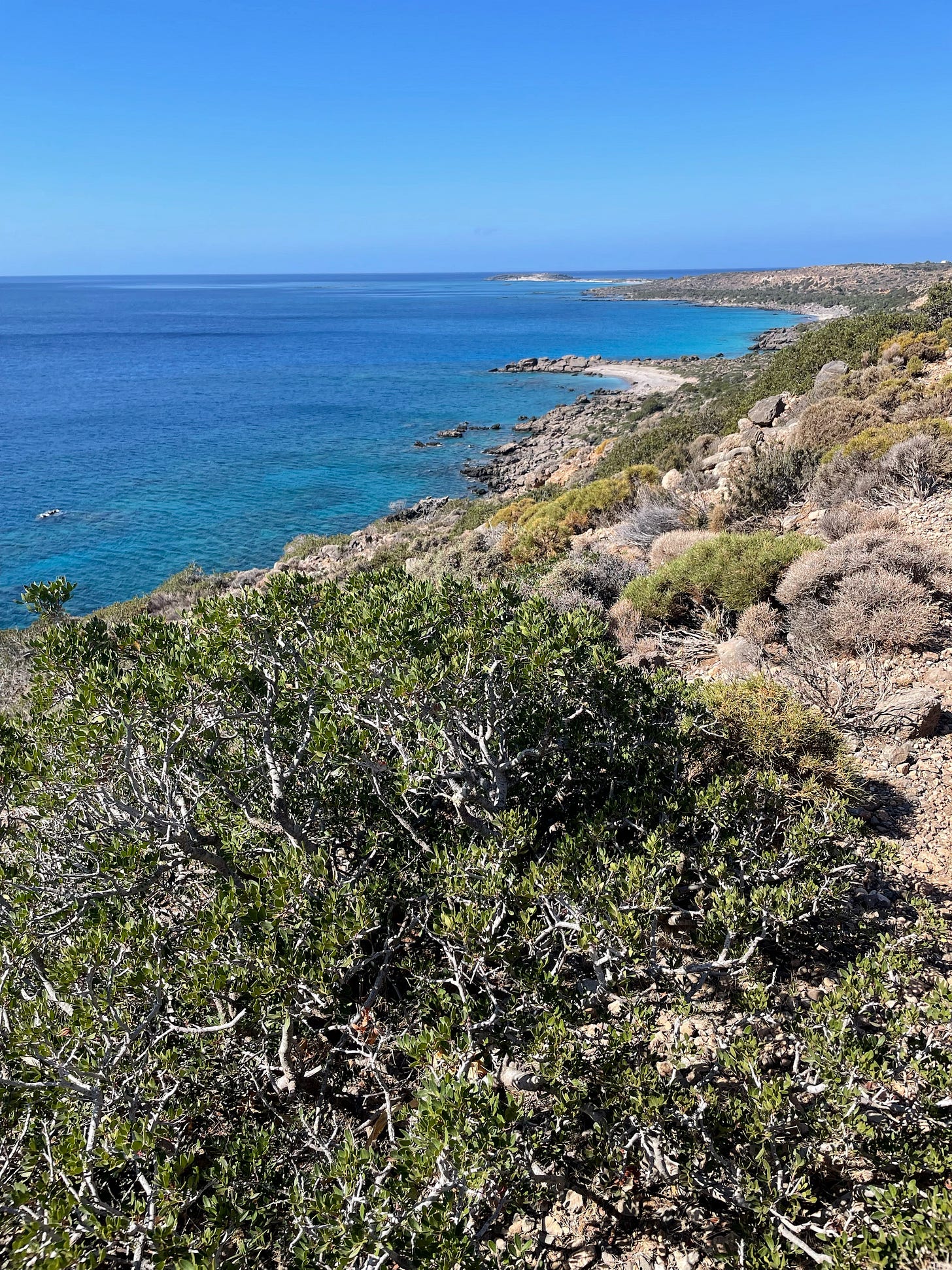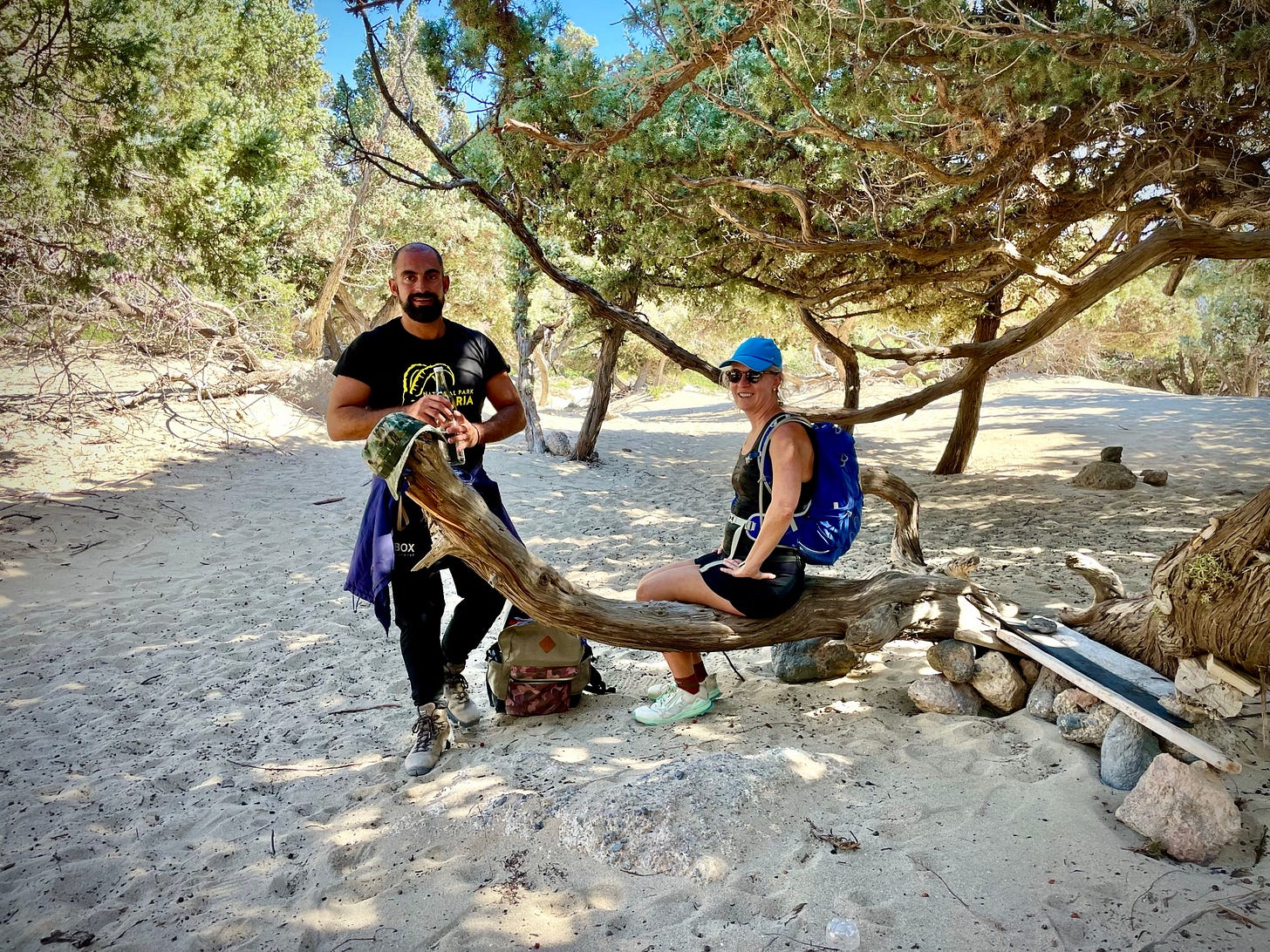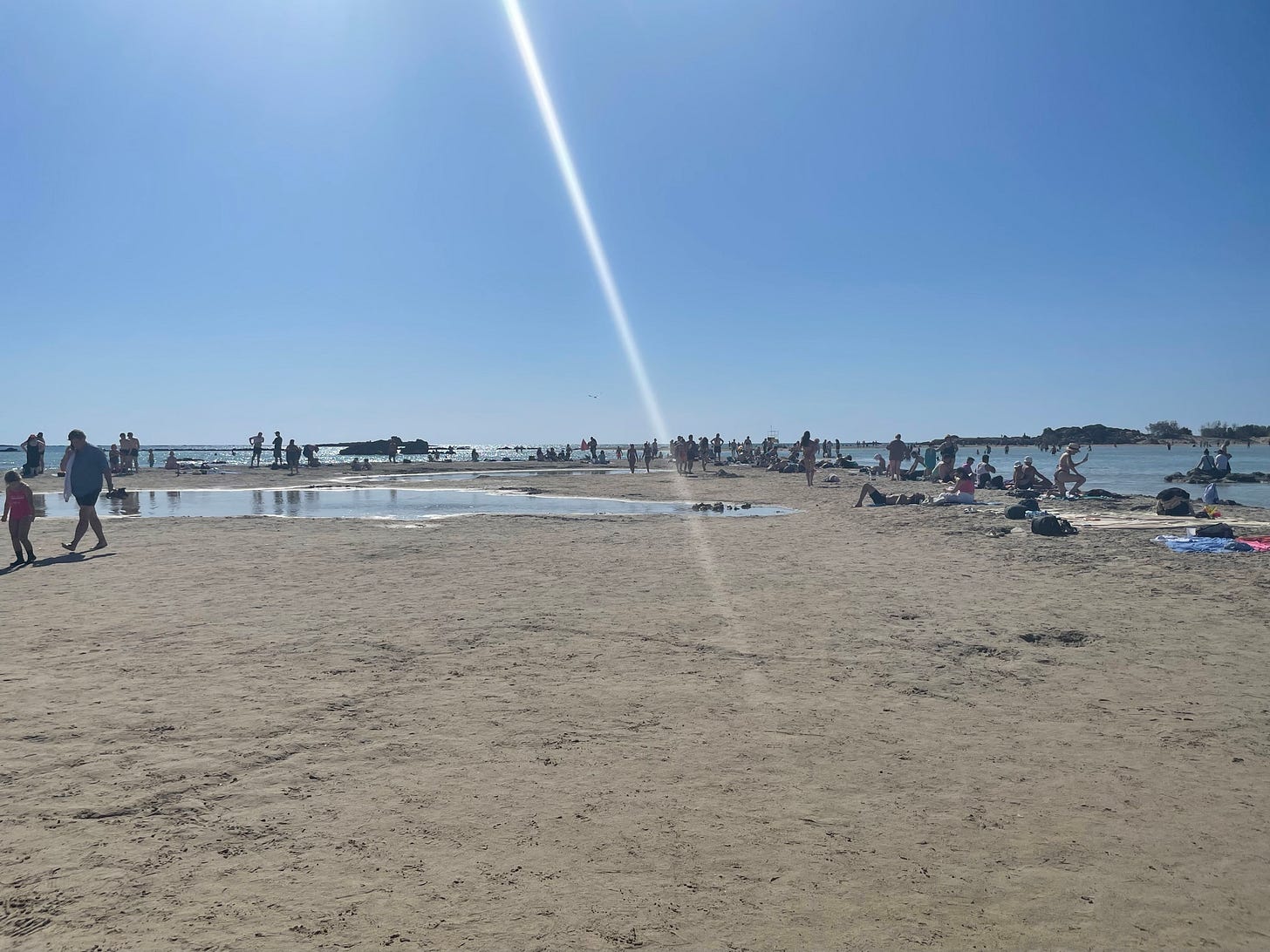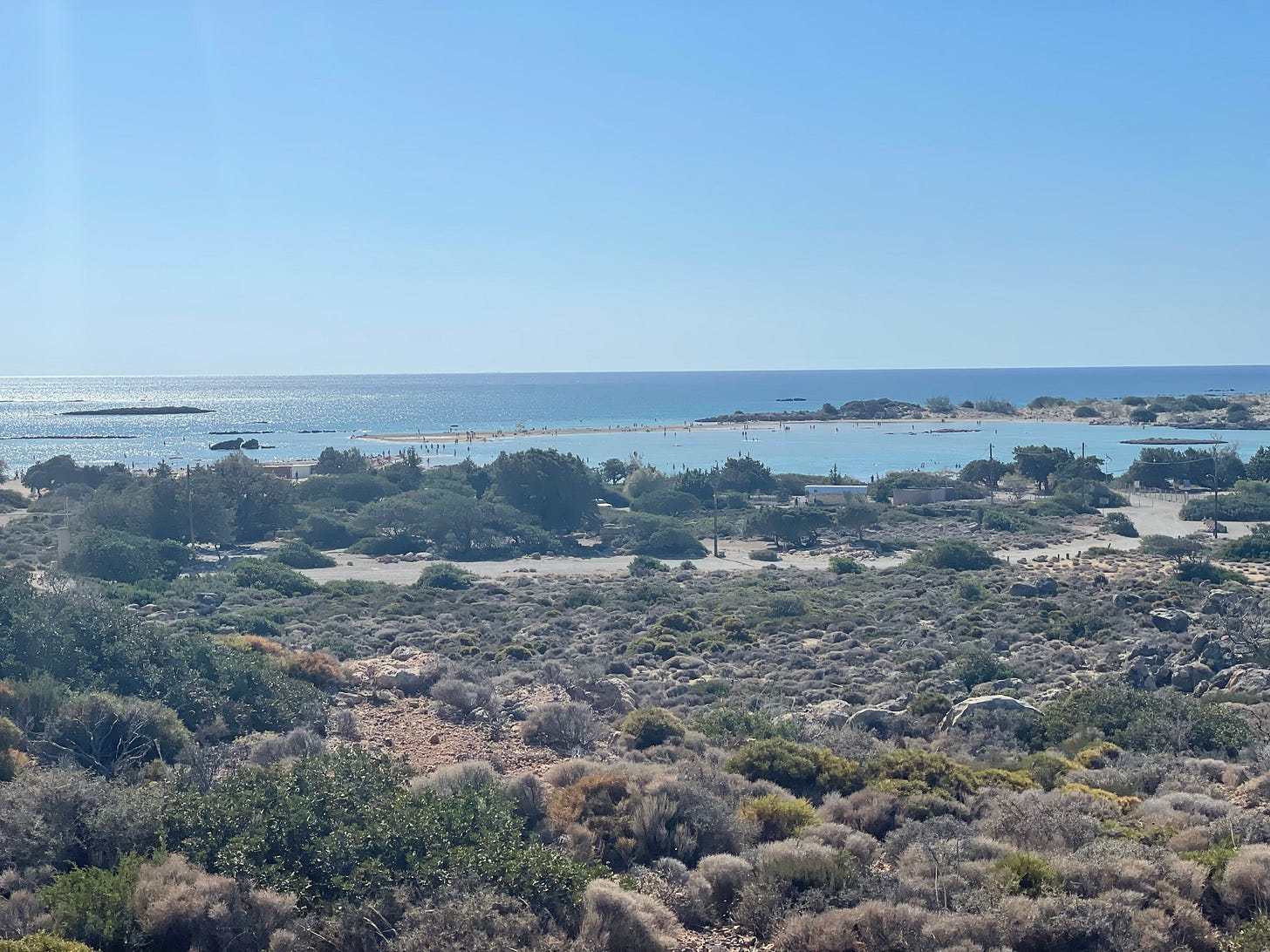This post is too long for email. To read the full article, click on the title.
Crete West Coast Trek, October 19–20, 2024
— Amy G. Hackney Blackwell, with Christopher Blackwell
Up over the coast of Crete, on our last hike.
When we finished our White Mountains trek, we immediately traveled to Sougia to do the last two days of Trekking Hellas’ Coastal treks in Crete (E4)(https://trekking.gr/en/excursions/coastal-treks-in-crete-e4). This was the last of the walks that Trekking Hellas set up for us.
When I was planning our trip, this seemed like a logical addendum. The first four days of the coastal trek actually duplicates four days of the White Mountains trek but in reverse (which in retrospect would make it a completely different hike, albeit over the same terrain; Samaria south to north might actually be a treat, though I wouldn’t love the first descent on the trail out of Chora Sfakion). The last two days, however, head to the west coast of Crete and a completely different prospect.
What made this short journey extra special was that, for the first and only time, we had a guide with us. Yannis met us in Sougia and was a delightful leader, companion, and friend, enlivening our conversation and keeping up our pace. We are most grateful to him for designing this fun itinerary, for being a strong and wise guide on the trail, for all his help with our subsequent arrangements, and for his warm hospitality and enthusiasm for his homeland.
October 20: Sougia–Paleochora
Dawn in Sougia.
Pou einai o Yannis?
We’d taken a ferry from Chora Sfakion to Sougia the previous evening. Trekking Hellas had emailed me Yannis’ contact information, and I texted him once we arrived in Sougia but didn’t hear back.
When we woke up, I still had no contact from Yannis. No matter, we thought, our departure is late, and he’d know where we’re staying so he could just meet us at the hotel.
Yeah… no. First, he thought we were at a different hotel. Second, our hotel was actually a collection of apartments without its own restaurant. It had an arrangement with one of the beachfront tavernas to supply us with breakfast, but that meant we were breakfasting about three blocks from where we had stayed.
We sat there. No Yannis. I called. No Yannis. I started to email Trekking Hellas’s office, and then Chris remembered WhatsApp.
We ought to have learned this by now. Our Trekking Hellas contacts in Rhodes used WhatsApp to communicate with us. Texts didn’t work with them. This was the rule with Greek contacts, and it was silly of us to forget it.
Chris messaged Yannis on WhatsApp, and Lo and Behold!, he was in Sougia! He was waiting for us at the lobby of a hotel that we were not staying at. He strolled down to the beach and we made our acquaintance over coffee.
Men bonding over large guns.
The lateness of our meetup didn’t really matter because we’d already agreed with Trekking Hellas to arrange for us to start the day with a water taxi. The boat would take us around the bend to the west and drop us off in the ancient town of Lissos, saving us the first stiff climb and descent. And the boat sailed west at 10:00.
Water taxi.
Lissos
Panagia church at Lissos, a second century Christian basilica right on the beach.
The route to Paleochora, the “Old Country”
Lissos is a lovely place to start a hike, especially after a lovely ten-minute boat ride to make up for a late start. Archaeologists, like the ancients before them, get there either by boat or on foot, walking over the mountains from Sougia.
It’s most famous for its Asclepion, a temple to Asclepius, the god of medicine. People used to come here to drink the waters of the spring and be healed in the asclepion. Suppliants would sometimes sleep overnight in the temple, and the sacred snakes would slither on them and take away their illness.
Lissos Asclepion, with some of the mosaic floor surviving.
The scent of carobs was thick in the air, fruity with a hint of date and chocolate. Yannis had brought some carob pods for us to snack on. You peel the pods and chew/suck the flesh off the giant seeds. They’re surprisingly delicious.
A carob tree.
Goats LOVE carob. They will actually climb the trees to get the pods!
Goat-in-a-Tree. Not our photo… taken in Morocco and shared by Wayne Hodgkinson. Thanks, Wayne!
From Lissos, we walked uphill to reach the high plateau. There we found ourselves in a literal boneyard!
A typical day’s hike along the coast of Crete.
Lammergeiers
A lammergeier ossuary!
Lammergeiers, or bearded vultures, or Gypaetus barbatus, are highly unusual scavengers. They eat carrion, like all vultures, but they do it in a different way. After an animal dies, the regular vultures and other scavengers devour its rotting flesh. Then the Lammergeiers swoop down, pick up the bones, transport them to great heights, and let them fall. The bones smash on the ground, and the lammergeiers eat the bones themselves. (They have very strong stomach acid—a pH of 1, equal to battery-acid, if you can believe that!)
Tasty vertebrae!
The birds favor particular locations for their bone-dropping activities. These areas are known as ossuaries, due to their collections of scattered bones. Clearly a flat, high plateau such as we were on would be ideal for this kind of thing.
Lammergeiers are very rare. They occur throughout Eurasia, but farmers and shepherds have long killed them due to a mistaken belief that they prey on live sheep. The name “lammergeier” means “lamb vulture” in German. They’re currently listed as Near Threatened by the IUCN.
We saw a number of dead goats in the mountains. Yannis says they actually do fall from heights. You can tell when something has died by the vultures that assemble overhead in bigger and bigger crowds–regular vultures, not the specialized lammergeiers.
Something must have died. Possibly they’re after the very stinky carcass we walked past.
Paleochora
First view of Paleochora peninsula
Up and over the plateau, we started descending toward Paleochora, our last stop on the south coast of Crete.
You can see the head of the “crocodile” looking out to sea.
We stopped at the popular Gialiskari beach for a quick swim and snack break. The water was starting to feel cold! But it was clear as glass.
Yannis had bkought snacks to share–Cretan cookies made by his own mother! He bought us Greek coffees and read our fortunes in the coffee grounds. He has a gift for this, a charisma.
Our route from Sougia.
And then we strolled in to Paleochora. Paleochoea is unambiguously on the south coast, but it’s on a small peninsula or polyp. This gives it a clear western exposure and a fine view of the sunset.
Sunset in Paleochora
The air was definitely feeling autumnal after sunset. Yannis showed us the town, which has the ubiquitous ruined Turkish fortress and a number of churches.
The eastern side of Paleochora.
We dined at a seafood restaurant on the waterfront where we could watch passengers disembark from the ferry from Sougia. The proprietor, who knew Yannis, served us wine from his own vineyard.
October 21: Paleochora–Elafonissi–Chania
Leaving Paleochora. All those greenhouses provide horiatiki to the hotels of Athens.
The route to Elafonisis, our last hike with Trekking Hellas.
This was our last day under the care of Trekking Hellas. After a reasonably late (and heavy!) breakfast, we took a car to Krios beach, where we started walking. Yannis had the idea that we might prefer to stay on a dirt road as long as possible, for easier walking and better views. Since the E4 is uniformly challenging, we were happy to concur.
Nothing at all wrong with a nice dirt road!
We stopped at one of the many chapels dedicated to John the Forerunner (Prodromos).
Yannis and I both learned how to light candles from our grandmothers.
Then there was nothing for it but to resume the E4, which was rough as always.
Stats for the walk to Elafonisi.
Goats were scampering everywhere, climbing carob trees and eating wild onions.
These onions are everywhere. The goats dig them up.
After the rocky cliffs, we descend down onto the beach.
The goats spend a certain amount of time on this beach.
We were headed to the famous beach of Elafonisi, which you can see at the far end of this shot.
Elafonisi is now one of the “most beautiful beaches in the world”, which means it’s also one of the most crowded. Even its sheer inaccessibility doesn’t make much difference. The Chania hotels run bus excursions and every Brit and German has rented a car, so it’s easy enough for them to make it there.
First we went past the beach of Kedrodasos, popular among people who want a quieter beach and don’t mind walking about a mile to get to it.
Kedrodasos is famous for its junipers.
Amy and Yannis taking a break in the shade!
Elafonisi itself is famous for its pink sand. It really is pink, but the color is mainly visible right at the edge of the water. It’s protected, so hopefully the millions of tourists won’t carry it all away in ziplock baggies.
Elafonisi beach with late October tourists still in force.
We spent about an hour taking refreshment from the snack bar (lemonade and Coke Light?). Yannis and I went swimming. The water really would be ideal for small children–its warm and there’s no surf whatsoever. And there is actual SAND instead of all those pebbles that line the beaches on the south coast! I can see why the place is popular.
You can walk through the shallow lagoon to the island. It’s sometimes very shallow, but today the water was chest-deep.
And that was the end of our outdoor excursion!
At 3:30, we walked back up the path to the parking lot (oh, yes, the parking lot is a good 20-minute climbing walk from the beach, for those of you considering a visit) and met our driver. He and Yannis took us back to Chania by way of an inland road that goes through mountains and past gorges and includes a tunnel built in the 1920s that is only wide enough for one vehicle. This is the main road between Elafonisi and Chania–it must be hellacious trying to navigate it in August, when the tourist burden is at its height. It does the usual thing of going right through tiny towns.
Yannis had the driver take us to our hotel, the very nice Malmo Historic Hotel in the old town of Chania. And he said goodbye, needing to head to his parents’ house for family dinner.
But he was still taking care of us! He made us a dinner reservation at Oionopoieo, a traditional Cretan restaurant right around the corner from our hotel. He also hooked us up with a car rental place just a couple of blocks away. We went there to reserve a car for the next morning and then grabbed an outside table at the restaurant.
It was a fine evening, and a fine conclusion to our extensive contact with Trekking Hellas.
The next morning, we headed east, to Lasithi and our last “home” in Kavousi!





